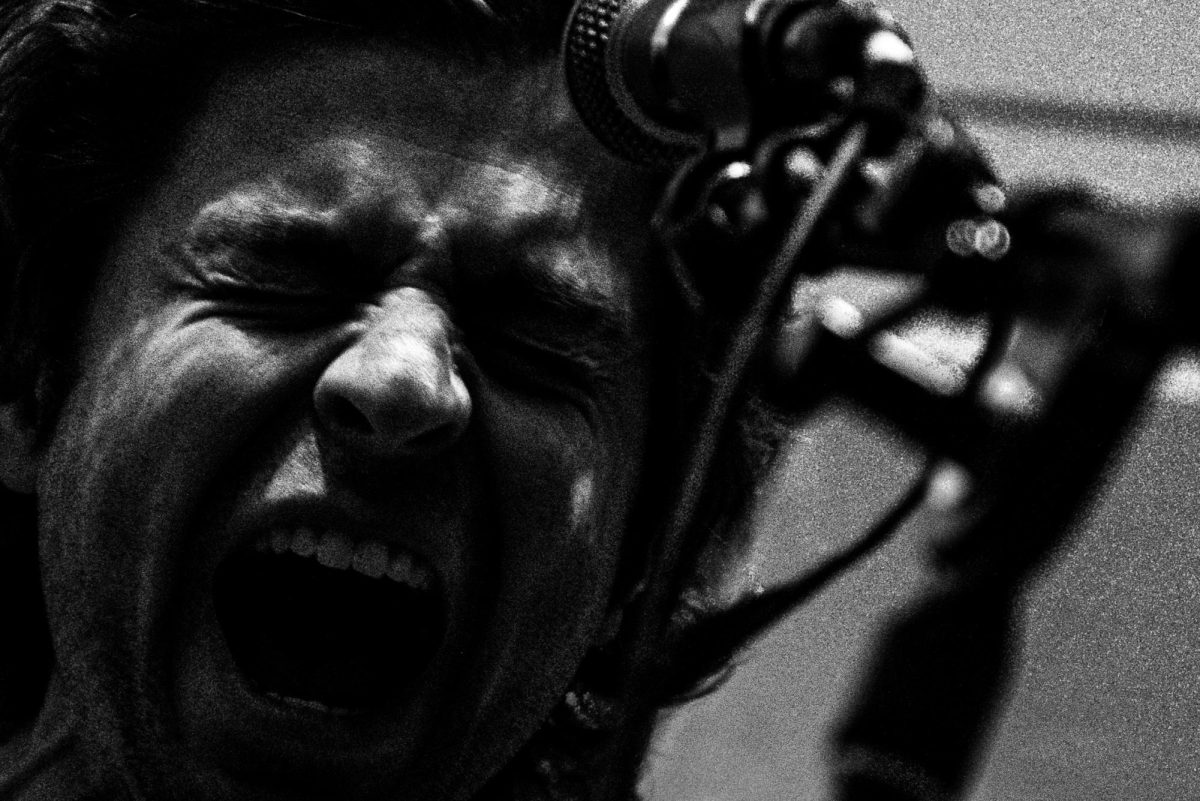Column: A Picture with Personality
April 1, 2012

The Arctic Monkeys have quite the following, and with good reason. They’ve got an interesting sound that differs from album to album, a highly rated live performance and a very incoherent lead singer who drunkenly mumbles about emotional trapdoors on stage. What else do you need in a band? Whether you choose to skip along the surface of the beat or delve deeper into the lyrics and the compositions they’ll give you something enjoyable to listen to.
Sure, this band won’t set the world on fire, but they’ve got character and skill and that’s plenty of reason for a fan to follow them, and for a listener to become a fan. Though, their newest album Suck It and See did not live up to the standard. Suck It and See wasn’t terrible, but it lacked the thing that character that separated The Arctic Monkeys from so many other bands with strong talent and similar style.
So, what constitutes character for The Arctic Monkeys and how did they lose it with Suck It and See? The Arctic Monkeys delivered really simple and relatable messages in fanciful and articulate language. Sure, you can just call a guy a greased up slimeball, but that’s not clever. When Alex Turner wants to call someone a slimeball he says, “There’s not a net you couldn’t slip through, or at least that’s the impression I get because you’re smooth and you’re wet.”
In addition to clever lyrics, the Arctic Monkeys have a violent and rapidly intensifying energy in their music. Alex Turner can go from a swaying lounge singer to a crier armed on a soap box in one short instrumental interlude. Every instrument fits each song pretty well, and Matt Helders forges a lively and complex dream beat while still following the bass and guitar rhythms. Most of all, the Arctic Monkeys scream out things a lot of us have thought. They yell out that clever insult that sits on the tip of your tongue before your better judgment drags it to the back of your throat.
The Arctic Monkeys don’t stop short of quips either. Their instruments and lyrics weave stories that become almost modern cautionary tales, from portraying that womanizing, entitled ass in “Brianstorm” to an unexciting sex life in “Fluorescent Adolescent” and posers from out of town in “Fake Tales from San FranciscoÛ. They cement their character and lyrics with instrumentation that blends with every single song’s lyrics. “Brianstorm” pounds abrasively at you, and makes you feel the anger towards Brian while “Fluorescent Adolescent” plods along in a restrained and emptily playful manner that matches so well with the thoughts of lifeless relationships. Even when the Arctic Monkeys started using more symbolic lyrics in Humbug, their instrumentation told a fantastic story in its own right.
Suck It and See lacked this character because the lyrics stopped being fresh and interesting as the instrumentation no longer felt explosive and telling. The songs were well executed by most measures, but they fell short in character. The songs did not tell a haunting story like they did in Humbug. Suck It and See deserves a listen, but it does not deserve attention like other albums. Luckily the song “Library Pictures” forges a solitary link to the band’s earlier works.
“Library Pictures” exhibits jaunty and fiery exchanges of instrumentation and vocals that fit in perfectly with the song (though unfortunately lacking in the cleverness of older songs). It runs a short two and a half minutes, but it is the one song that truly lights up the album with the personality the band channeled in the rest of their albums. I still traverse the twists and turns of “Library PicturesÛ, ignoring much of the rest of Suck It and See, just to hear the song that speaks with that style and personality that I would hate to see fade away.
By Austin R. Ryan














